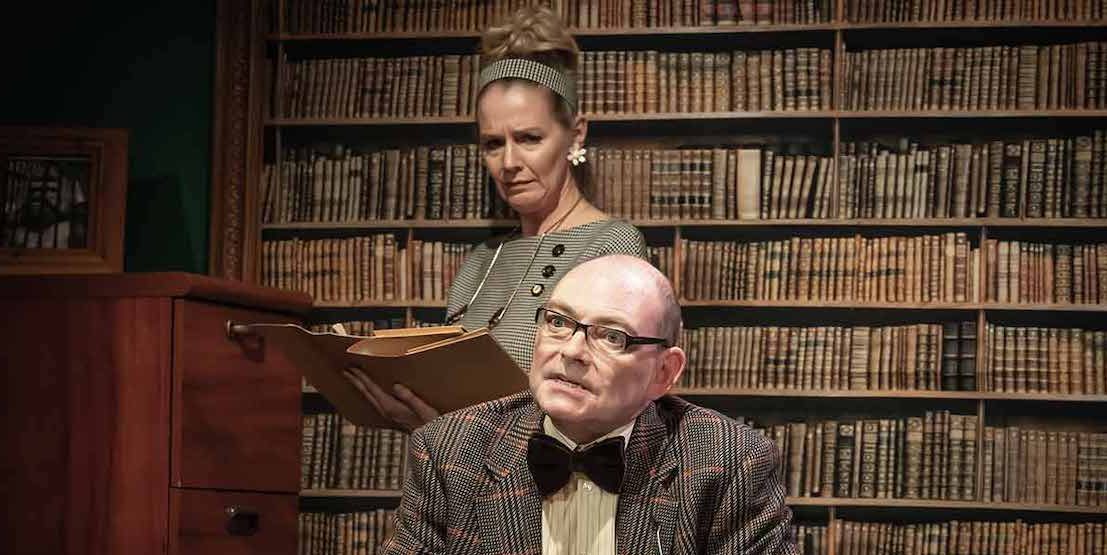It is Larkin’s centenary – he was born 100 years ago into a very different world. He died 37 years ago also into a very different world. But I question if that is reason enough to revive this piece which does not feel timely enough to offer any new perspective on Larkin, the times in which he lived or the themes on which he wrote.
It is clear that there is a significant gap between Larkin’s poetry and his life. This is discussed in the play, by Larkin himself (played by Daniel Wain), but not really examined. He makes it clear it exists, but there is not really a sense that he either knows why or is interested in finding out.
A lack of character examination is a weakness that runs throughout Larkin With Women. The play explores Larkin’s relationships with three women – long term, long distance partner academic Monica (Mia Skyte), working class Librarian Maeve (Lynne Harrison) and his secretary Betty (Annabel Miller). All of whom have at least a sexual relationship with Larkin, and two of whom at least see that relationship as emotional too. What I never got a sense of was why.
Both Maeve and Monica love a man who is not portrayed as particularly loveable. Both give their lives to this relationship in ways that clearly and observably compromise their own happiness (Maeve in losing her virginity despite her strong religious convictions, Monica in staying with Philip despite his refusal to move in together). This occasionaly burst out through zero to sixty outbursts by the characters, which are a played by both actresses a little too overwrought and are responded to by Waid as Larkin a little too blandly. Only Betty’s utilitarian approach to the late blooming sexual aspect of their relationship seems to come without pain, giving Miller the chance to be the most interesting and playful of characters.
The script portrays Larkin as an intelligent man and a great poet but one who is a mediocrity in his personal life. The stardust of sleeping with a great poet can only go so far and we don’t get any real sense of why these women make these choices. They are there only to be receptacles for Larkin’s witty observations and morbid ruminations.
That wit does save the script somewhat. There were a number of laugh out loud moments that were warmly received by a highly receptive audience. The short second half of the play flows considerably better and has a great deal more humanity from all concerned. To the point where Larkin’s final scene with Monica is quite affecting.
There are a number of staging problems with this production. Some scenes end with characters going off stage and the turnarounds – covered with jazz standards – take a long time. Others with the actors moving set and props and changing costume in the darkness. If there was a pattern to why decisions were made about these things, I couldn’t discern it. There was also a painting displayed prominently on the back wall that was turned on occasion. I initially thought this was to denote a change of venue, but it wasn’t moved at all in the second half, so I am no longer sure that was true.
Larkin with Women is not a play without charm. But like its central character, I had to work just a little too hard to unearth it. If staged a little tighter, edited a little wiser, the women filled out a little more, this would be a better examination of the always fascinating gap between art and artist.

